Designing Dance: Production Designer Bill Groom’s Meticulous Ballet World-Building in “Étoile”
In the world of ballet as dramatized in Étoile, prickly personalities throw tantrums one minute and dance with exquisite grace the next. Created by former dancer Amy Sherman-Palladino and her husband Dan Palladino, the Amazon Prime series (now streaming) follows imagines a contentious talent swap between New York and Parisian dance companies desperate to create buzz about their new seasons.
It doesn’t go well.
The quarrelsome characters include Cheyanne (Lou De Laâge) the world’s best ballet dancer and eco-activist who publicly denounces the company’s billionaire arms-dealer benefactor; the seemingly autistic choreographer Tobias (Gideon Glick), who jumps up on stage in the middle of a performance and insists on changing steps; plus, the perpetually stressed-out company directors Jack (Luke Kirby) and Geneviève (Charlotte Gainsbourg), tasked with riding herd over their unruly charges.
Étoile, filmed in New York, New Jersey, and Paris, features sumptuous backdrops from Brooklyn-based designer Bill Groom, who earned three Production Design Emmy nominations for his work on The Marvelous Mrs. Maisel after winning two for Boardwalk Empire. He spent six months last year in Paris designing sets and securing locations for the show. “Amy and Dan were careful not to rely on tourist icons, Groom explains. “We wanted the audience to see Paris like the locals would. And by the way, Paris is a great place to work if you have to be away from home.”
During a visit to Los Angeles, Groom talks about finding inspiration in Lincoln Center, taking cues from a 19th-century Parisian theater, protecting Étoile‘s actors and dancers with “sprung floors”, and repurposing a ballet set that originated in wartime Ukraine.
The ballet productions look so elegant. Did you design them?
For production reasons, budget reasons, and most importantly, creative reasons, we decided to use existing ballet sets because I thought it would be more interesting to get productions designed by different hands. The first one scheduled to shoot was La Bayadere, so one day, I just sat down and googled “La Bayadere productions for rent,” and something popped up.
What did you find?
A ballet company in Tokyo had the backdrops, side wings—everything was available to rent. The production arrived in boxes in Paris. Then we discovered that it was actually a production from Ukraine that had been sent to this company in Tokyo for safekeeping.
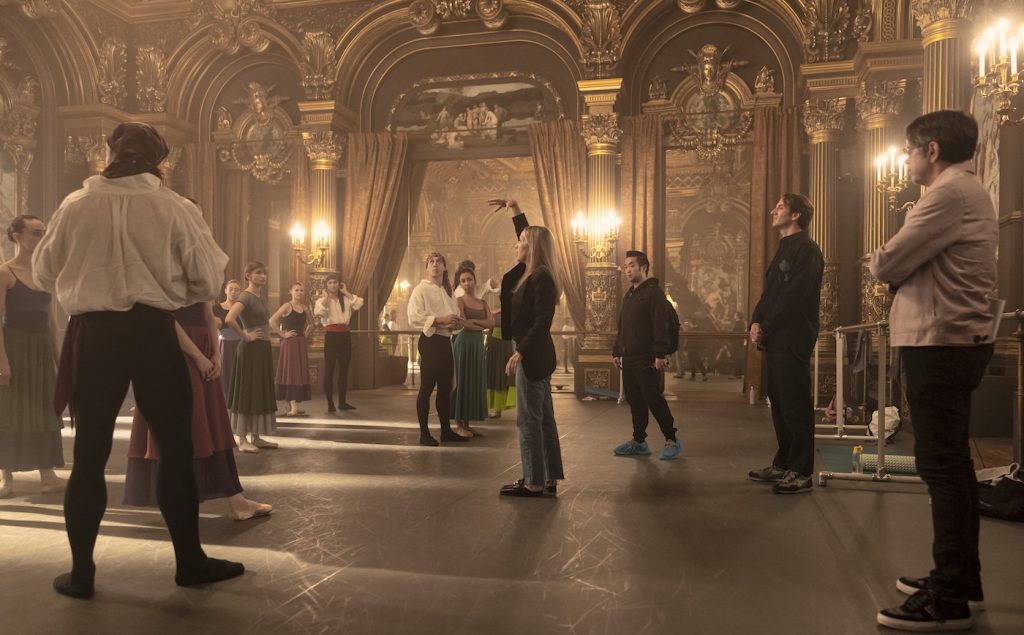
The art survives. What else did you import?
We got Romeo and Juliet and Swan Lake from the Birmingham Royal Ballet. They arrived by airplane in two large containers.
A lot of drama happens in the dancers’ rehearsal spaces, which look quite elegant but in completely different ways. In New York, the rehearsal studio is minimalistic, while in Paris, it seems ornate. Did you build those spaces from scratch?
The New York and Paris rehearsal studios were both built. It’s interesting to hear about the contrast between the two because Amy and Dan’s goal was to make New York look very modern while Paris had a classical look. There’s a rehearsal studio in Paris that Amy loved at the Garnier Theater. She wanted to shoot there, but it wasn’t available, so we ended up basically building what looks like a rehearsal studio at the Garnier, but a little bit larger.
The construction of the Paris studio must have been challenging, given the huge columns and the level of detail.
It was quite an undertaking because every inch is sculpted and cast in plaster. The painters and plastering teams were wonderfully talented, and they don’t often get a chance to do this kind of work.
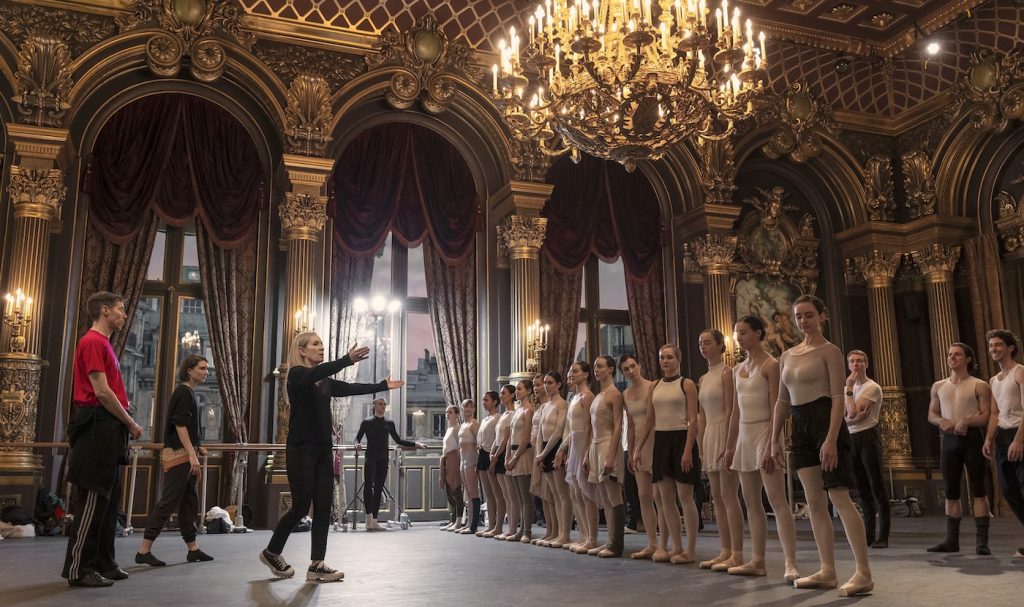
The Paris dance studio is inspired by Palais Garnier, built in 1875 during Napoleon III’s reign. How did you create the sleek New York space?
So many dance rehearsal studios in New York are basically big white boxes with a wall of mirrors, so one of the issues for me was that I didn’t want to build a boring white box. While researching inside Lincoln Center, I found rooms in the basement originally built as rehearsal spaces for the orchestra, which had a kind of accordion-shaped ceiling, resilient to the acoustics. One of them had been converted into a dance rehearsal space. When I saw that room, I said, “Bingo, this is what we can do.” It was large and beautiful to look at.
And those windows! They’re very tall and very narrow, with the horizontal bleachers stretching horizontally across the space.
That’s all based on the Metropolitan Opera building at Lincoln Center, down to the size of the windows, which are very narrow. The bleachers I saw in some spaces there are often used by backers and patrons to watch rehearsals. We also had to build the correct floors for every dance situation. Whether it was rehearsal or on a stage, we were very careful about having sprung dance floors.
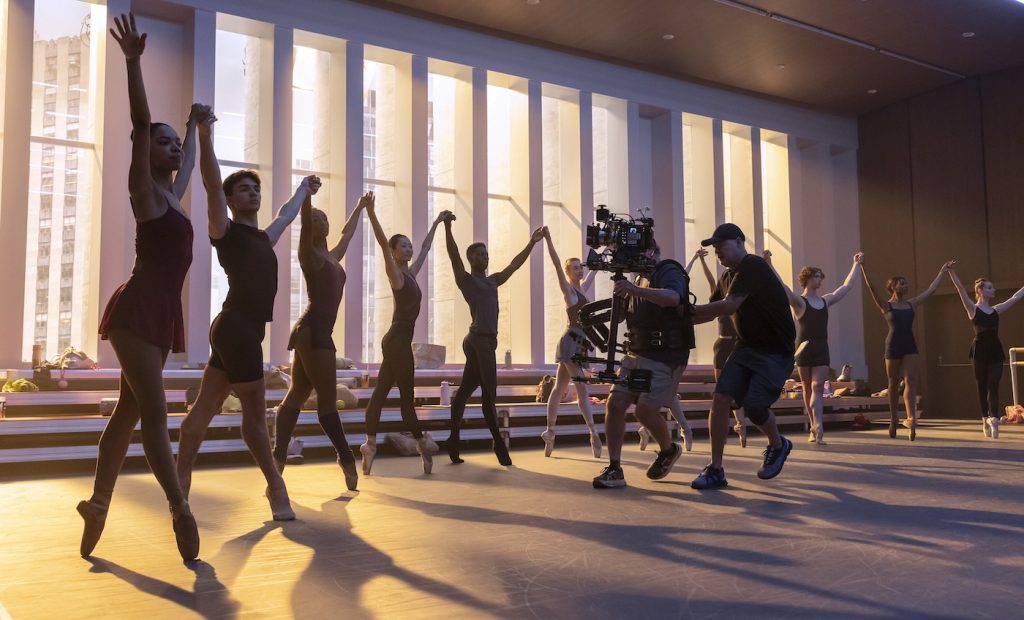
Sprung floors?
Meaning the floor has bounce. Sprung floors originally were built of oak, woven like a basket under the surface so that when a dancer comes down with a massive amount of force, the shock doesn’t go through their legs and cause an injury but goes into the floor. For the New York performances, we used the New Jersey Performing Arts Center. It’s sprung only for Broadway dancing but not for ballet, so we had to install a more resilient floor.
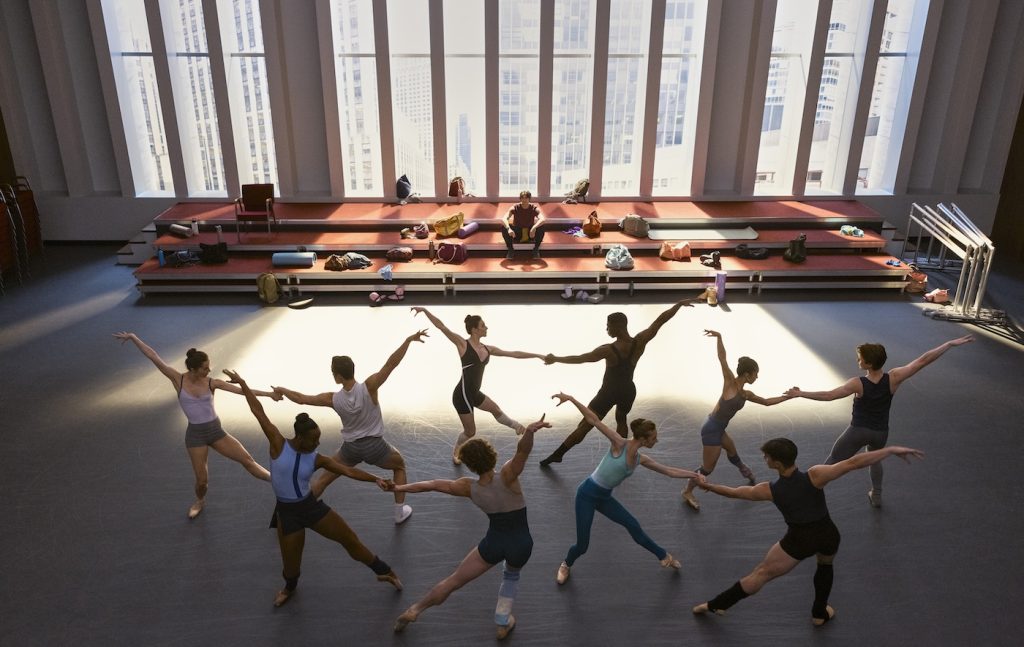
Was it logistically tricky to design a production split between Paris and New York?
I tried not to go back and forth too much. We shot Paris episodes one through six in the spring. We weren’t allowed to shoot during the Olympics, so we did all the New York episodes one through eight over the summer, and then came back to Paris to finish.
You made The Marvelous Mrs. Maisel and half of Étoile in New York and New Jersey. As someone who lives in Brooklyn, is it heartening to take part in productions that impact the local economy?
Absolutely. The money goes to lumber yards, paint companies, florists, caterers, and individuals [in the crew]. People who are not in the business may not realize how many moving parts there are, but the money trickles down to all the different crafts as well as to people who are only peripherally involved with the movie business. There are so many looks and experiences you can get in New York, and now there are a lot of second and third generation craftspeople here as well.
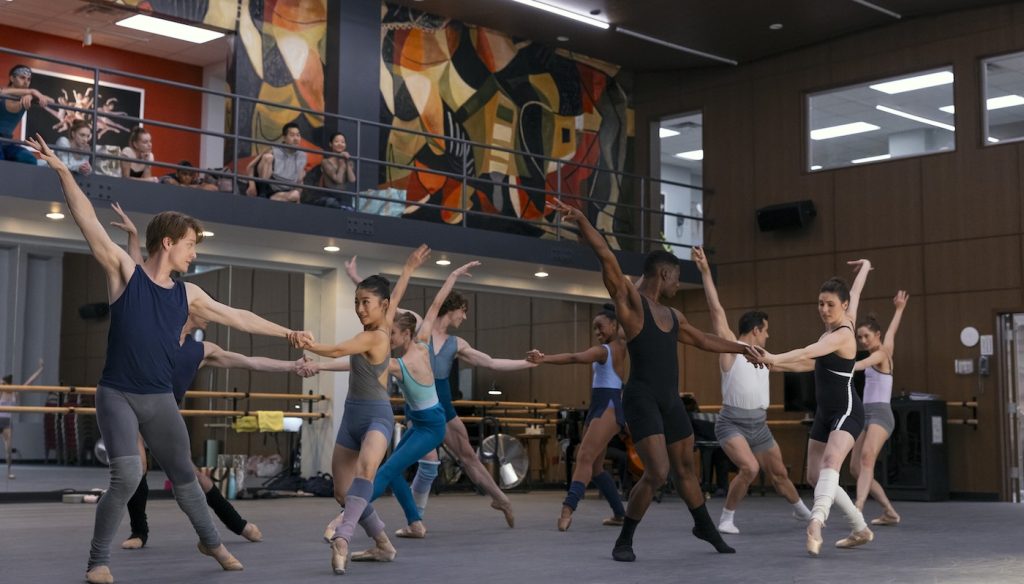
Lincoln Center is not mentioned by name in the show, but it provides some gorgeous exterior shots. How much access did you have?
We shot in the Lincoln Center lobby, so when you see scenes in lobbies, they are filmed at the Metropolitan Opera House. The other interiors, it was impossible for Lincoln Center to accommodate our schedule, so we made it work at the New Jersey Performing Arts Center, which is about the same size proscenium, about the same balcony and orchestra seating.
And the New York rehearsal space—where did you build that?
Steiner Studios in Brooklyn.
You arrived in New York City in 1978 to launch your career as a production designer. Where did you come from?
I was born in Missouri, an only child. My parents and I moved to Oklahoma when I was eleven. My dad ran a construction and trucking company. A couple of engineers at his company wanted to pay for my college and train me to be an engineer so I could move into the road construction industry. I didn’t want to do that. I wanted to design sets.
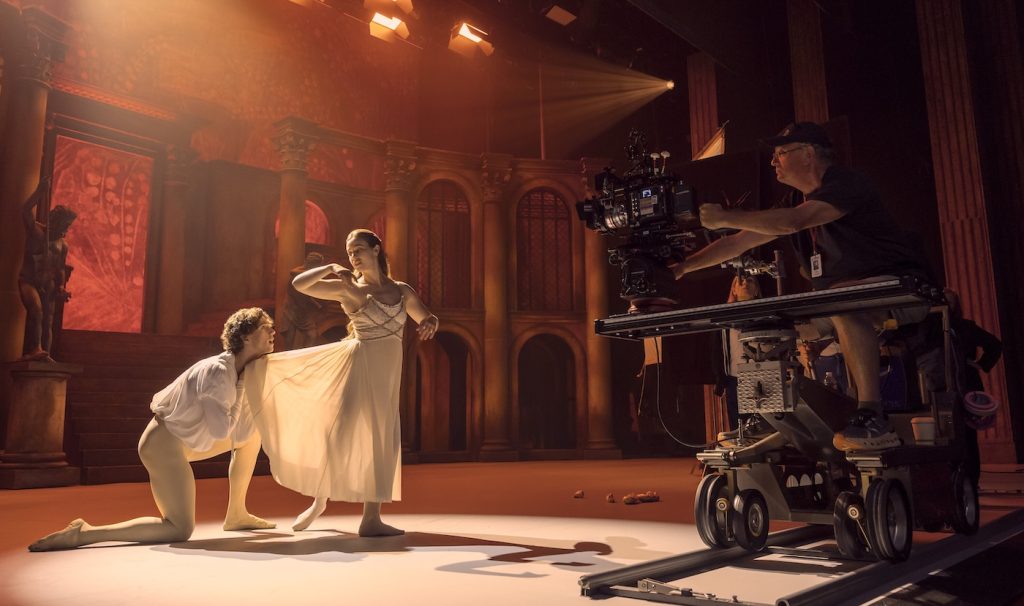
So you studied stage design at Tulane University. What sparked your interest in movies and TV?
I didn’t see a movie until I was in college because I grew up with a fundamentalist Christian background, and going to movies was considered a sin. When I saw my first movie, Bullitt, there was blood everywhere in one scene. I had to get out of my seat and go into the lobby to get some air because I’d never seen anything like that before on a 40-foot screen. That’s when I realized the kind of impact an image can have.
Amy Palladino initially gained acclaim for her witty Gilmore Girls scripts before she and her husband Dan moved into directing as well on Marvelous Mrs. Maisel and Étoile. What are they like to work with?
They’re both great. Amy has expectations or ideas that are not always the easy way out, but are often the best way out. Amy and Dan are collaborative and allow everybody to bring their own ideas. They’re very good at figuring out when those ideas are good.
Featured image: ÉTOILE Photo: PHILIPPE ANTONELLO © AMAZON CONTENT SERVICES LLC



